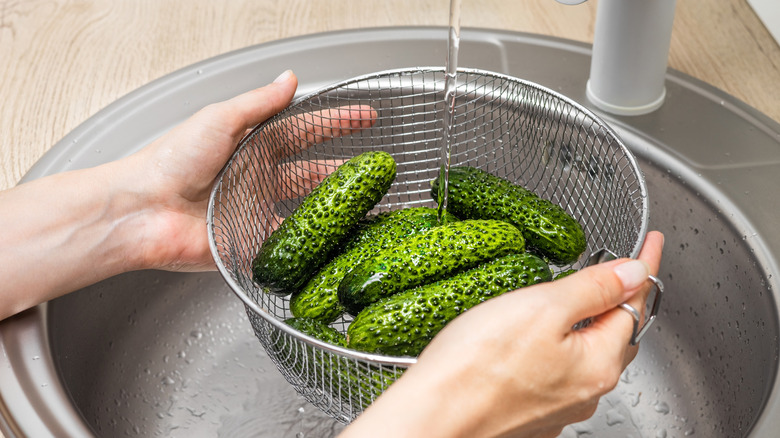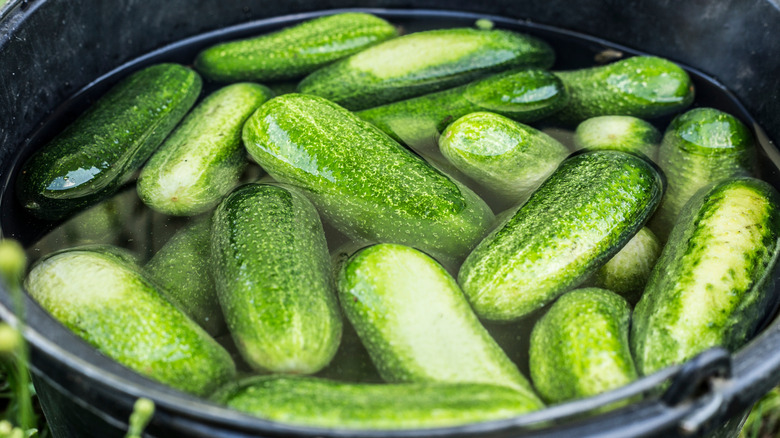The Step You Can't Skip When Washing Cucumbers
There are some red flags you can't ignore when shopping for produce, which is why sanitizing your cucumbers once you've brought them home is vital — especially if you like to enjoy them with the skin on, where bacteria, wax, pesticides, and dirt are most prevalent. We spoke with Stephen Chavez, senior chef-instructor at the Institute of Culinary Education's Los Angeles campus, to discuss his preferred way to wash this specific vegetable.
"Using a baking soda solution ... has been studied as a way to effectively remove several common pesticides and residues that can be found on the surface of produce," Chavez says. "In studies, a baking soda solution has been found to reduce residue by approximately [70 to 100%] compared to regular water, which reduced by approximately [30 to 60%]." More than just a great way to clean your kitchen naturally, baking soda's alkaline properties destabilize pesticides and bacteria, effectively killing them off like a mild sanitizer.
"Surface wax is not reduced by as much as these numbers, but again, more wax will be removed using a baking soda solution than just water alone," continues Chavez. However, a vegetable brush gives your baking soda solution the extra push it needs to thoroughly remove wax while also tackling stuck-on dirt. While the solution itself is great for all kinds of grocery store cucumbers, a bit of technique really helps maximize its efficiency.
How to use baking soda to clean cucumbers
Remember that the key role of baking soda here is to break down contaminants. As such, you'll need to let your cucumbers soak a bit to see real results. "The ratio I usually use is two teaspoons of baking soda to one quart ... of water. The most effective method is to submerge the produce in the solution, covered by at least one inch of the solution, for [one to two] minutes," Stephen Chavez says. "After submerging, rinse the produce under clean, cold water and pat dry."
But if you're in a rush or want to clean and dry several cucumbers at once, Chavez recommends using one simple kitchen tool: a salad spinner. "The produce should be kept as intact as possible, meaning do not slice or cut it before washing, except for heads of leafy greens," he suggests. "Those should be separated or cut into pieces before washing."
However, Chavez points out that his cleaning process can be a bit rough, so it's best used for firm produce like apples and cucumbers. While you absolutely can use this method for thin-skinned fruits like raspberries or tomatoes, he cautions you to be gentle during each step to avoid bruising or rupturing their exteriors. Rather than use a brush and salad spinner, gently tumble them in your hands after they soak to rinse off the baking soda. Afterward, let them air dry in an out-of-the-way spot before cooking with them.


